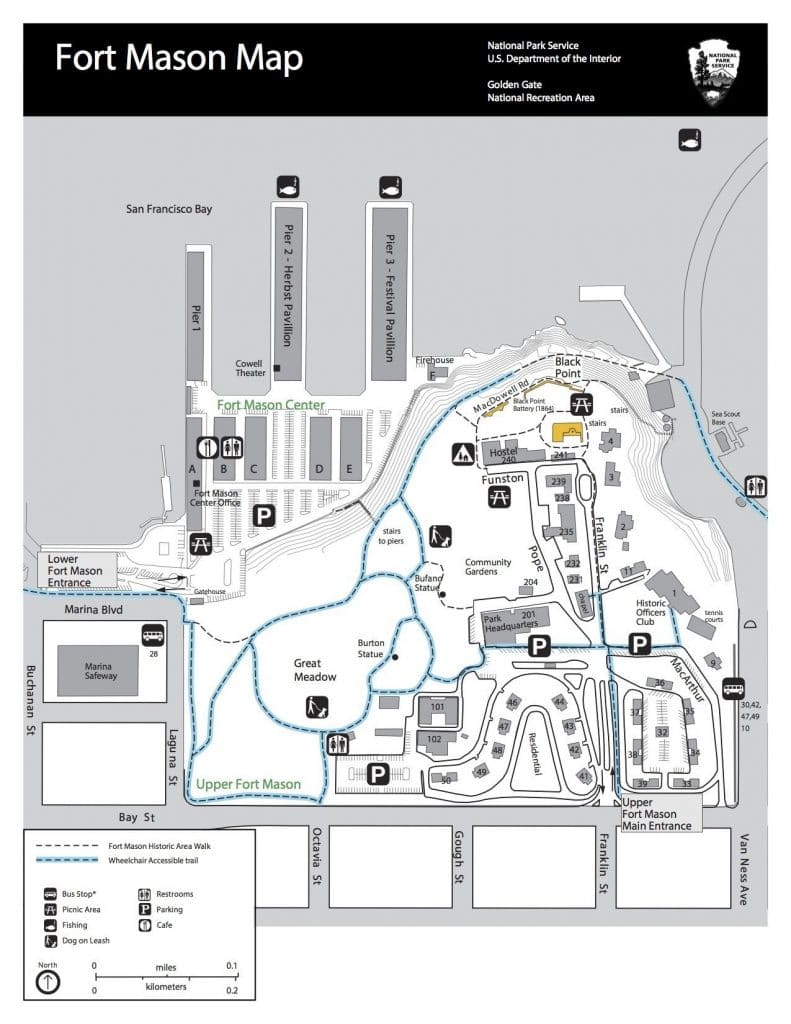Fort Mason: Birding Hotspot
By David Assmann
Community gardens provide an easily accessible retreat from the concrete jungle of a city, even a city as scenic as San Francisco. What makes them even more idyllic is that they are filled with vibrant bird life. Fort Mason not only has a community garden open to the public, but is also one of the top birding hotspots in the city, with an eBird list of 180 species.
Situated on a bluff above the Bay, the key to Fort Mason’s diversity of bird life is its location and varied topography, providing a refuge for aquatic and land birds as well as migrants. One of the attractions of this birding hotspot is its compactness — upper Fort Mason, which is the main birding area, is only 68 acres in size, making it an easy place to bird, even if you have only an hour.
Fort Mason wasn’t always a hospitable site for birds. First reserved for the U.S. military in 1850 because of its strategic location, Fort Mason was the U.S. Army’s major West Coast shipping port until the end of the 1950s. More than 1.6 million members of the military traveled through Fort Mason on their way to the Pacific during World War II. What is now the Great Meadow was entirely covered by buildings until the 1970s, when Fort Mason became part of the first national urban park, the Golden Gate National Recreation Area.
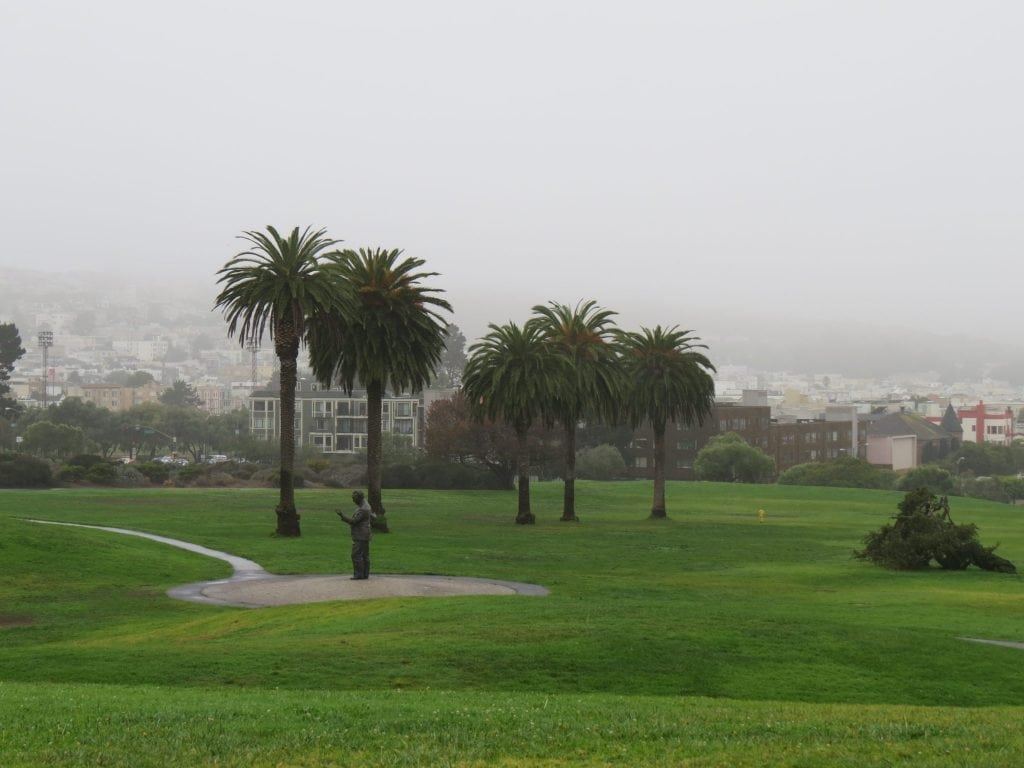
Since I started birding, Fort Mason has become my guide for the changing of the seasons. It isn’t fall for me until the Red-Breasted Sapsucker returns from the Sierra at the end of September to take up residence for the winter at Fort Mason. I know winter has ended in late March when the same sapsucker spends a day roaming around Fort Mason instead of sticking to its adopted trees and then disappears, headed for the mountains.
Similarly, I don’t consider it winter until the Red-Breasted Mergansers swim in Aquatic Park in December. I know winter is drawing to a close when the Allen’s Hummingbirds show up in February. The first Western Kingbird migrating through marks spring for me. Summer begins when the resident Downy Woodpeckers and Pygmy Nuthatches start raising young. (Last year a pair of each raised their young in the same tree with nest holes less than a foot apart.)
Most birders start their birding in the Community Garden (in the center of Fort Mason), which provides lots of food and habitat for birds all year long. Orioles can be found in the garden all year. In the summer, it’s a great place to see colorful Hooded Orioles, which reliably nest at Fort Mason. Every year since I started birding in the Garden, there have been overwintering orioles – either Orchard or Hooded – sometimes both. In the spring and fall, Bullock’s Orioles pass through.
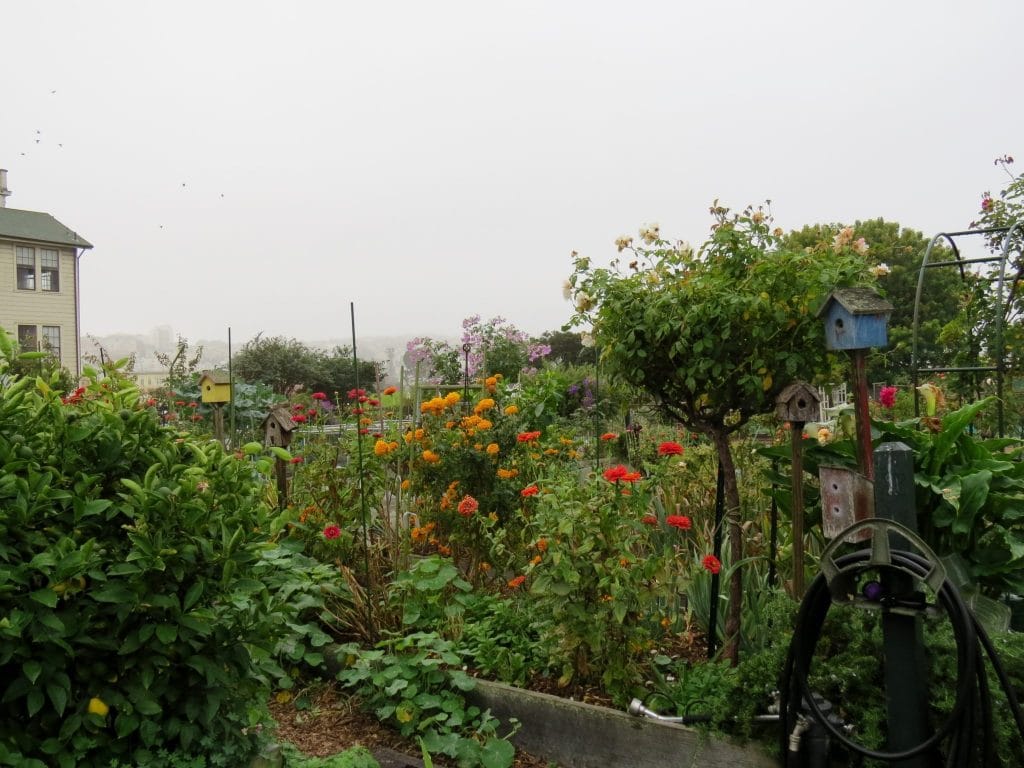
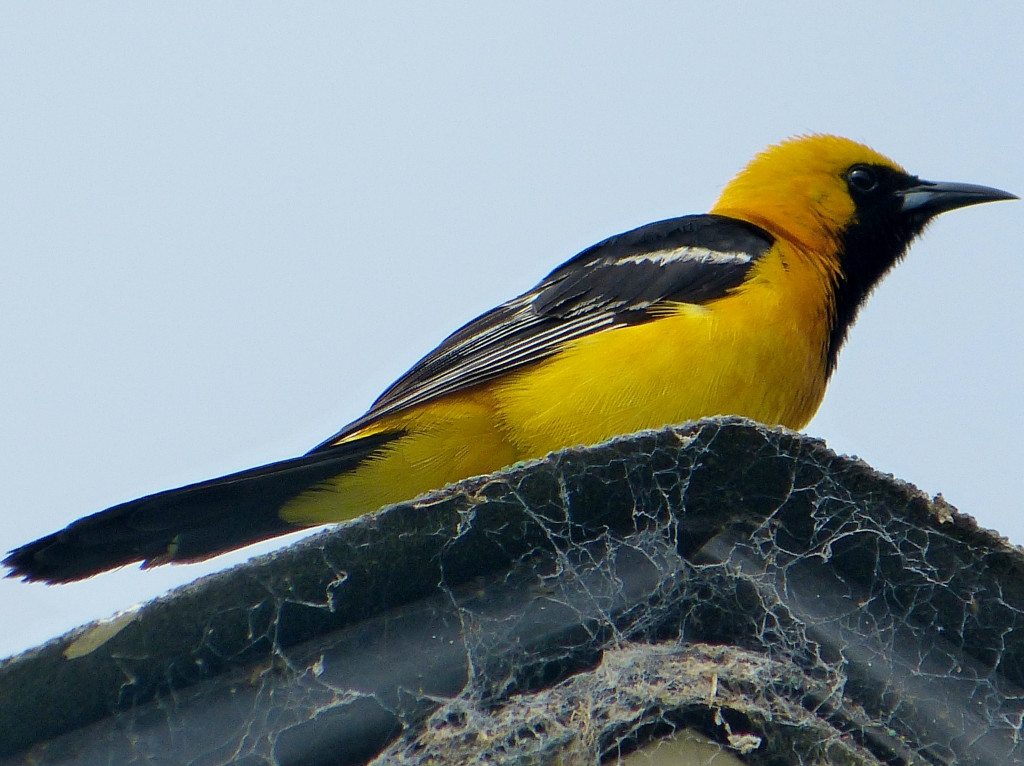
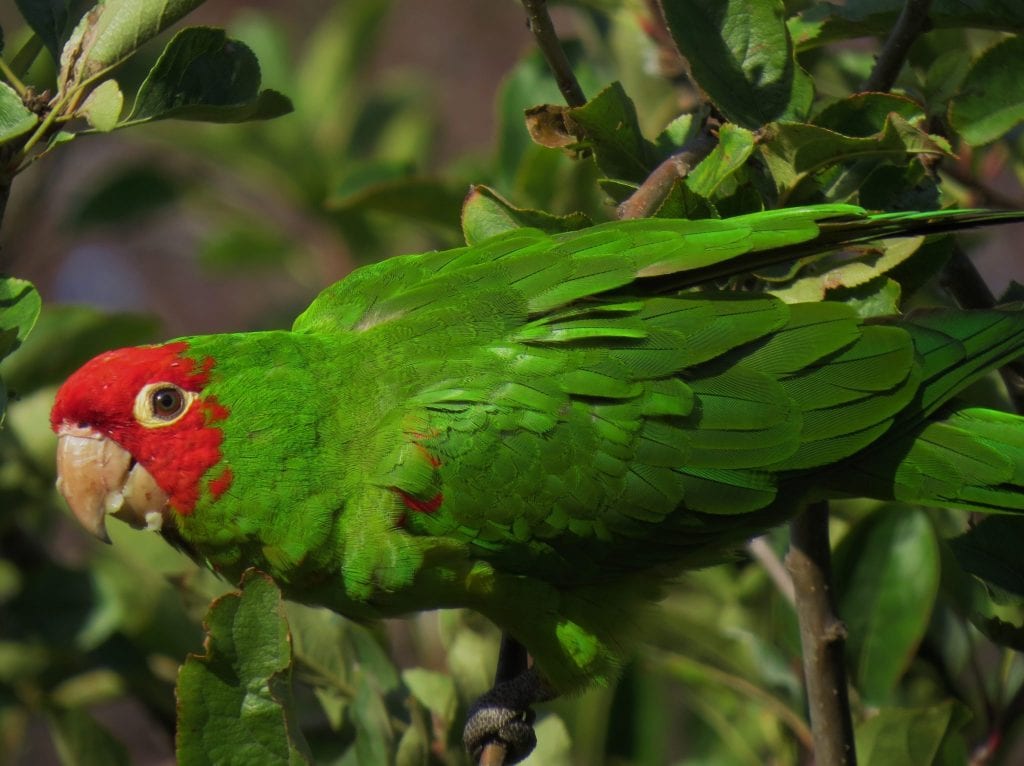
The garden is also a great place for goldfinches, finches and sparrows — 15 sparrow species have been found in the garden. Red-masked Parakeets — San Francisco’s “Wild Parrots of Telegraph Hill” — visit the garden on a regular basis. They have nested at Fort Mason, and in the fall, they particularly like eating the apples on the tree on the north side of the garden. During migration, there can be a wide variety of species passing through the garden. If you’re lucky, you’ll find something unusual like a Vesper Sparrow or a Blackpoll Warbler.
While the garden is a special place, birders who only go there miss out on a lot of what Fort Mason has to offer. North of the garden you’ll find the San Francisco Fisherman’s Wharf Hostel, and behind that, the Black Point Battery. The trees in and around the Battery attract flycatchers, warblers and tanagers during migration. I’ve seen as many as 15 Western Tanagers in one tree. This is also where I saw my first Black-Throated Blue Warbler for California.
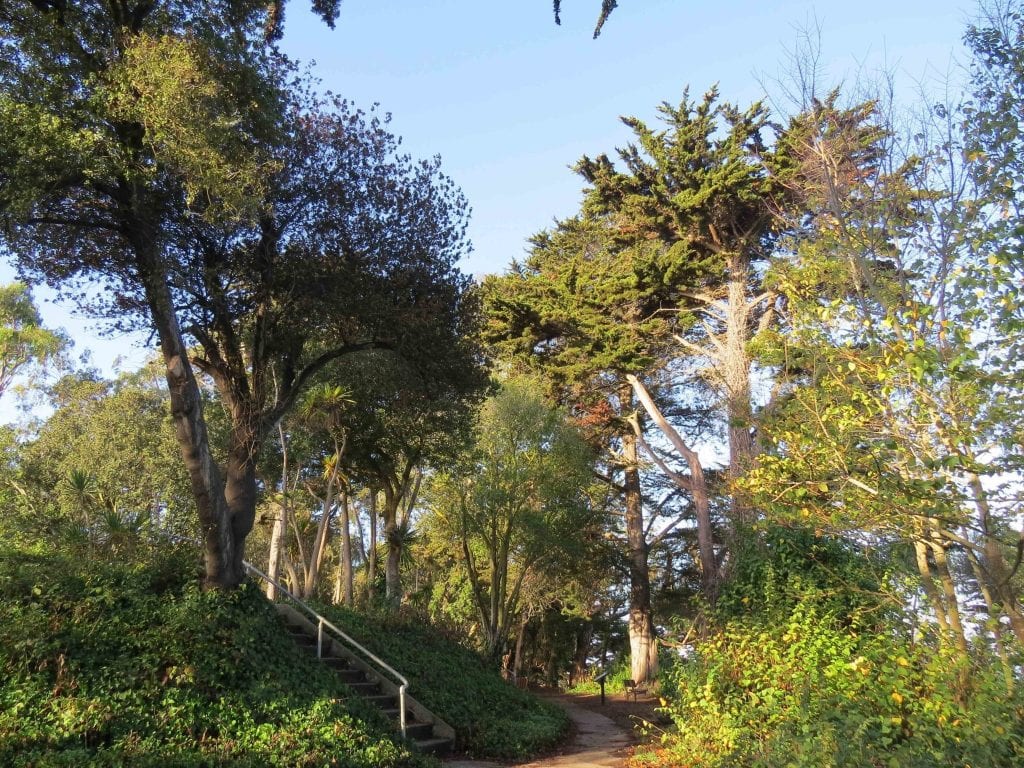
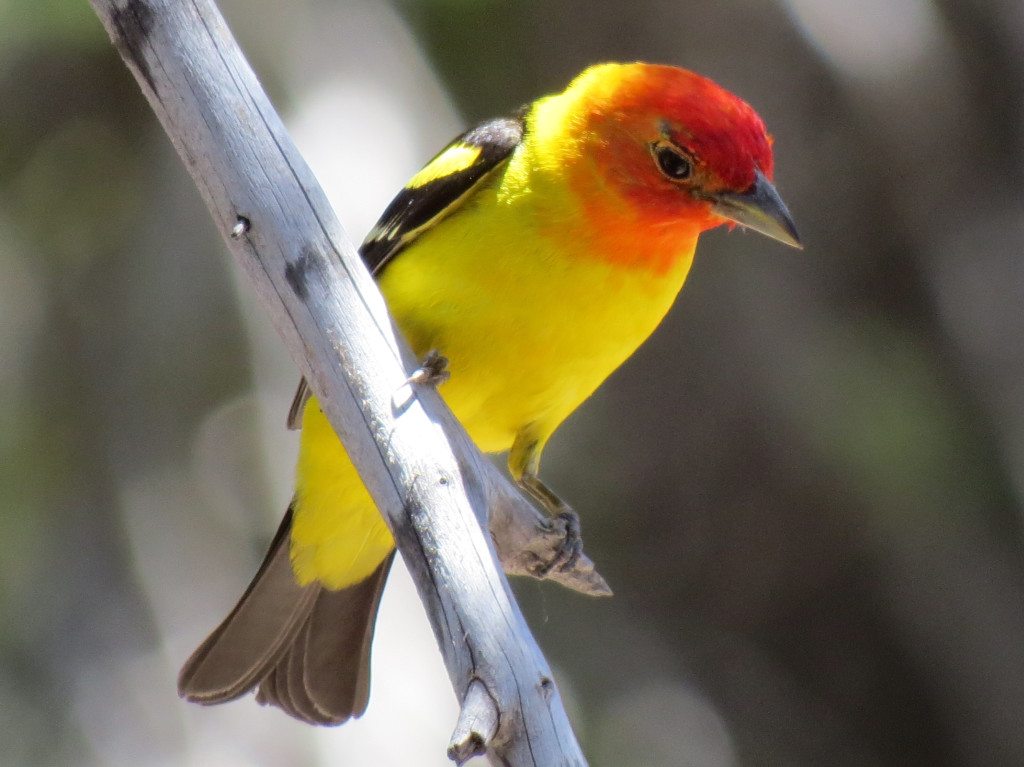
From the Battery, you can scope Alcatraz Island and the San Francisco Bay for water birds. Last spring, the first Northern Gannet found in the Pacific Ocean visited Alcatraz a number of times over a four month period, and was easily visible from Fort Mason. Walking down to Aquatic Park from here is highly recommended – particularly in winter, when water birds and shorebirds can be found. Aquatic Park is popular with swimmers all year, but don’t let that deter you: There are lots of birds here. At high tide during the winter, you can often find Wandering Tattlers on the abandoned pier. Last November I was surprised to find a Rhinoceros Auklet swimming just offshore.
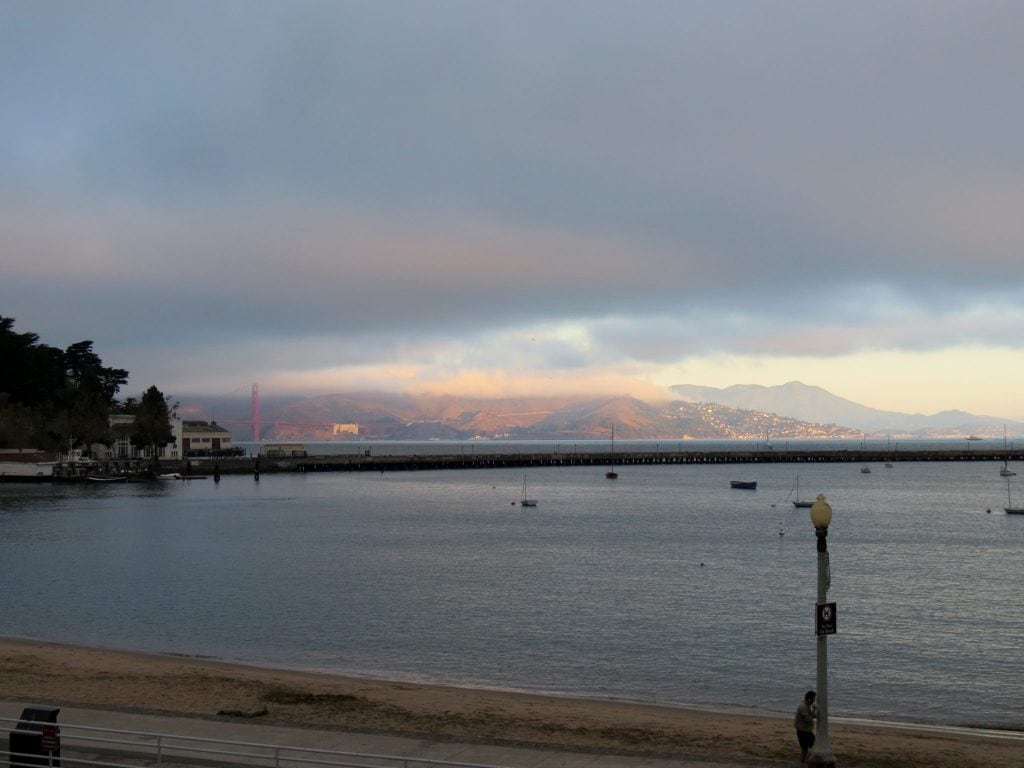
Two other areas of Fort Mason are also worth exploring. The Great Meadow, west of the garden, is very popular and gets crowded by 10 a.m., particularly on weekends. If you get there early, however, you may find a Say’s Phoebe in winter, or Western Meadowlarks in fall migration. In spring and summer, a male Hooded Oriole may be sitting on top of the palms in the middle of the meadow.
The General’s Residence, on the east side of Fort Mason, has a lawn in front of it that can have a variety of birds, including a Dickcissel in the fall of 2012. The northeast side of the house brings an overview of Aquatic Park, and you can also see a water fountain at the end of the lawn north of the house: Birds love to bathe in this fountain during warm weather. Check the nearby Bottlebrush bushes. They are magnets for insectivores. South of the General’s Residence, along MacArthur, the trees can often produce a surprise or two.
Birding at Fort Mason is best between dawn and 10 a.m. Since the park is popular, afternoon birding is generally not as productive. While sunny weather gives the best views of birds, I’ve actually had better luck with rarities on foggy mornings. But no matter when you visit, there are always interesting birds to observe.
——————————–
Fast Facts
Location: Northern waterfront of San Francisco. Bounded by Van Ness Avenue, Bay Street, Laguna Street, and Marina Blvd. Click here for a Google map or here to download the National Park Service map.
Hours/Fees: Open 24 hours, no fee.
Dogs: Dogs are not allowed in the Community Garden but are permitted in other parts of Fort Mason.
Habitat: Urban park, with a meadow, garden, natural area with trees, and bay.
Key Birds:
Year-Round: Double-Crested Cormorants, Brown Pelican, Great Blue Heron, Black-Crowned Night Heron, Cooper’s Hawk, Red-Tailed Hawk, Mourning Dove, Ann’s Hummingbird, Downy Woodpecker, Red-Masked Parakeet, Black Phoebe, Chestnut-Backed Chickadee, Pygmy Nuthatch, Bushtit, Northern Mockingbird, Orange-Crowned Warbler, California Towhee, Song Sparrow, White-Crowned Sparrow, Dark-Eyed Junco, House Finch, Lesser Goldfinch and American Goldfinch.
Summer: Pigeon Guillemot, Caspian Tern, Tree Swallow, Violet-Green Swallow, Barn Swallow, and Hooded Oriole.
Winter: Red-Breasted Merganser, Common Loon, Wandering Tattler, Black Turnstone, Mew Gull, Red-Breasted Sapsucker, Northern Flicker, Nuttall’s Woodpecker, Say’s Phoebe, Ruby-Crowned Kinglet, Hermit Thrush, Cedar Waxwing, Yellow-Rumped Warbler, Townsend’s Warbler, Fox Sparrow, White-Throated Sparrow, Golden-Crowned Sparrow and Orchard Oriole (some years).
Spring Migration: White-Throated Swift, Olive-Sided Flycatcher, Western Wood-Pewee, Pacific-Slope Flycatcher, Western Kingbird, Warbling Vireo, Northern Rough-Winged Swallow, Swainson’s Thrush, Allen’s Hummingbird, Yellow Warbler, Chipping Sparrow, Lark Sparrow, and Bullock’s Oriole.
Fall Migration: Heerman’s Gull (post-breeding migrant), Elegant Tern (post-breeding migrant), Rufous Hummingbird, Western Wood-Pewee, Willow Flycatcher, Pacific-Slope Flycatcher, Cassin’s Vireo, Warbling Vireo, Nashville Warbler, Yellow Warbler, Palm Warbler, Black-Throated Gray Warbler, Hermit Warbler, Wilson’s Warbler, Clay-Colored Sparrow, Brewer’s Sparrow, Savannah Sparrow, Lincoln’s Sparrow, Black-Headed Grosbeak, Western Tanager, Western Meadowlark and Bullock’s Oriole.
Ease of Access: Upper Fort Mason is flat, and a portion of it is wheelchair accessible. Steps going down to Aquatic Park descend a fairly steep hill. Well patrolled by the Park Service.
Getting There: Enter Fort Mason at Bay and Franklin. (It’s essentially at the end of Franklin Street.) At the first stop sign, you can turn left and park in Visitor Parking. Most of it is two-hour parking, while some is four-hour. If you are taking Muni, take the 30 to Chestnut and Laguna, and walk, about a seven- to eight-minute walk.
Nearby Services: There are bathrooms on the south side of the Great Meadow.
Nearby cafes/restaurants: Greens Restaurant, a famous and upscale vegetarian restaurant, is in lower Fort Mason. It also operates Greens To Go, which has pastries, coffee, and tea for takeout. Goody Cafe in Building C in lower Fort Mason is casual and is open Wednesdays through Sundays. The hostel also has a café, Cafe Franco.
For more information: www.fortmason.org. Click here for an illustrated guide to Fort Mason’s history, including a walking tour.
——————————-
Formerly the Deputy Director of the San Francisco Department of the Environment, David Assmann is now retired and lives within walking distance of Fort Mason. He leads a free birding field trip at Fort Mason on the third Sunday of every month and produces greeting cards from his bird photographs. For details on David’s next trip and other GGBA field trips, see our web page.
Click here for reviews of more Bay Area Birding Hotspots by Golden Gate Bird Alliance members.
